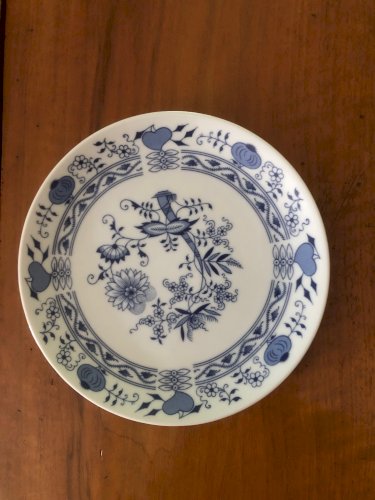- Sell Now
- Home
-
FURNISH
All STORAGE FURNITURE • Wardrobe • Chests of drawers, Chiffonnier • Sideboard • Shelves, Bookshelves • File cabinet • Sewing Furniture • Bar cabinet • TV Stand • Trunk, Chest TABLE & BEDSIDE TABLE • Dinner Table • Coffee table, side table, end table & Bedside • Console, Pedestal table & Selette • Serving Table, Trolley • Card Table • Draper's counter & table SEAT • Sofa • Armchair • Chair • Stool • Bench • Daybed • Beanbag & Footrest • Deckchair & Outdoor DESK, SECRETARY, DRESSING TABLE GARDEN LOUNGE BEDDING • Bed • Bedhead • Cradle, Moses basket CRAFT FURNITURE, WORKSHOP • Workbench • Stool, Ladder, Step • Easel & Trestle SCREEN PIANO
-
DECORATE
All TO PUT • Sculpture, Statuette • Vase & Planter • Dame Jeanne, Bonbonne & Flacon • Bridal globe, Dome • Pin tray, Ashtray • Candlestick & Candle • Photo frame • Stone, Fossil, Mineral • Earth Globe MIRROR WALL DECORATION • Painting • Engraving & Illustration • Poster • Tapestry • Wall Frame • Plate & Sign • Juju Hat & Wall Paniel • Mask • Hunting Trophy • Other object to hang CLOCK, PENDULUM & ALARM CLOCK ARRANGEMENT • Jar, Box & Case • Basket, Wastebasket & Crates • Magazine Rack & Vinyl Holder • Display & Spinner • Coat hook & Coat rack • Furniture Valet & Mannequin • Towel Holder • Suitcase & Travel Bag • Bottle Rack • Umbrella holder BATHROOM OFFICE • Mail holder • Bookends • Sulphide & Paperweight • Stationery FIREPLACE ACCESSORIES HOBBIES • Vintage Sport • Music • Vintage device • Smoking Item • Militaria, Ancient weapon • Miniature Vehicle • Game, Playing Cards • Collection object & Curiosity BIRD CAGE RELIGION, SPIRITUALITY
- TEXTURE
- ILLUMINATE
-
ACCOMODATE
All TABLE & SERVING • Plate • Silverware • Knife Holder • Glass • Bowl, Mug, Cup • Bowl, Ramekin & Cup • Dish, Cup & Salad Bowl • Tray, Basket & Server • Table Mat • Pitcher, Carafe, Bottle, Tea & Coffee Jug • Ice Bucket • Salt & Pepper shakers, Oil & Vinegar shakers • Sugar and jam maker • Gravy boat • Butter dish • Egg cup • Terrine OLD BALANCE CUTTING BOARD GRINDER CASSEROLE, SAUCEPAN & PAN KITCHEN UTENSIL & ACCESSORY
- TINKER
- KIDS
- Jewelry & Accessories
Login
Description
A beautiful classic for collectors of fine Thun porcelain, if you are looking to acquire or complete your collection with its cobalt "Blue Onion" patterns under glaze (underglaze printing) released in a limited series. In the 1870s, the porcelain factory in Klášterec nad Ohří was the first to offer porcelain pieces adorned with onions and other botanical motifs – a style called "cibulák," derived from the word "cibule," which means "onion." In spring 2024, the porcelain factory in Klášterec nad Ohří will cease all its activities. Thus, the town has definitively lost its connection to the famous porcelain brand that had been its pride for over two centuries. These plates for appetizers or desserts have been used and may show minor signs of use. I have several items from this service available. In the case of purchasing multiple pieces, I will consider a lower selling price. URGENT: DUE TO MOVING, I WILL CONSIDER ALL SERIOUS PURCHASE OFFERS FOR A FAVORABLE OUTCOME! A bit of history about this great porcelain house: The second factory of its kind in Czech lands, by the end of the 19th century, Thun porcelain achieved international success. The porcelain factory in Klášterec nad Ohří was founded in 1794 by J. M. Weber, a forest master and administrator of the noble Thun family's estate. He wanted to exploit the kaolin deposit discovered on the estate; however, the first attempts at manufacturing porcelain were anything but successful... The situation changed in 1797 when the entrepreneur Christian Nonne rented the factory. Under his direction, production quality and sales quickly increased. Moreover, Nonne began buying kaolin from the vicinity of Kadaň, a municipality in the same region, which had far superior quality. Once Nonne's rental contract expired, it was Count Jan Josef Thun himself who took over the factory. The brand "K" then became "TK." In 1822, Thun finally received the charter of franchises for porcelain production. Indeed, during the time of the Austria-Hungary monarchy, Czech porcelain manufacturers had to wait an average of 30 years to receive this official document confirming the quality of their production. During the first half of the 19th century, pieces of dishware that are still prized by today's collectors, particularly cups and saucers adorned with high-level paintings by foreign painters, were produced in Klášterec nad Ohří. From 1843, the Klášterec nad Ohří factory received permission to equip itself with a printing press. From then on, in addition to hand-painted pieces, it offered items with printed decorations. In the mid-19th century, the porcelain factory turned to figurative designs, mainly under the direction of sculptor Arnošt Popp. The Thun family remained the owner of the company even during the difficult periods of two World Wars and the interwar period... until the nationalization of 1945. From 1958, it became part of the national company Karlovarský porcelán. In 2009, it was acquired by the company Thun 1794. However, in recent years, the porcelain factory has faced difficulties, contending with rising energy prices and falling sales. In spring 2024, the porcelain factory in Klášterec nad Ohří will cease all its activities. Thus, the town has definitively lost its connection to the famous porcelain brand that had been its pride for over two centuries.
Réf :
#319652
Brand / From : Porcelaine THUN - Service « Oignons Bleus »
Color(s) : White / Blue
Material : Porcelain
Pattern : Floral, Vegetal
Related Products
Comments
Description
A beautiful classic for collectors of fine Thun porcelain, if you are looking to acquire or complete your collection with its cobalt "Blue Onion" patterns under glaze (underglaze printing) released in a limited series. In the 1870s, the porcelain factory in Klášterec nad Ohří was the first to offer porcelain pieces adorned with onions and other botanical motifs – a style called "cibulák," derived from the word "cibule," which means "onion." In spring 2024, the porcelain factory in Klášterec nad Ohří will cease all its activities. Thus, the town has definitively lost its connection to the famous porcelain brand that had been its pride for over two centuries. These plates for appetizers or desserts have been used and may show minor signs of use. I have several items from this service available. In the case of purchasing multiple pieces, I will consider a lower selling price. URGENT: DUE TO MOVING, I WILL CONSIDER ALL SERIOUS PURCHASE OFFERS FOR A FAVORABLE OUTCOME! A bit of history about this great porcelain house: The second factory of its kind in Czech lands, by the end of the 19th century, Thun porcelain achieved international success. The porcelain factory in Klášterec nad Ohří was founded in 1794 by J. M. Weber, a forest master and administrator of the noble Thun family's estate. He wanted to exploit the kaolin deposit discovered on the estate; however, the first attempts at manufacturing porcelain were anything but successful... The situation changed in 1797 when the entrepreneur Christian Nonne rented the factory. Under his direction, production quality and sales quickly increased. Moreover, Nonne began buying kaolin from the vicinity of Kadaň, a municipality in the same region, which had far superior quality. Once Nonne's rental contract expired, it was Count Jan Josef Thun himself who took over the factory. The brand "K" then became "TK." In 1822, Thun finally received the charter of franchises for porcelain production. Indeed, during the time of the Austria-Hungary monarchy, Czech porcelain manufacturers had to wait an average of 30 years to receive this official document confirming the quality of their production. During the first half of the 19th century, pieces of dishware that are still prized by today's collectors, particularly cups and saucers adorned with high-level paintings by foreign painters, were produced in Klášterec nad Ohří. From 1843, the Klášterec nad Ohří factory received permission to equip itself with a printing press. From then on, in addition to hand-painted pieces, it offered items with printed decorations. In the mid-19th century, the porcelain factory turned to figurative designs, mainly under the direction of sculptor Arnošt Popp. The Thun family remained the owner of the company even during the difficult periods of two World Wars and the interwar period... until the nationalization of 1945. From 1958, it became part of the national company Karlovarský porcelán. In 2009, it was acquired by the company Thun 1794. However, in recent years, the porcelain factory has faced difficulties, contending with rising energy prices and falling sales. In spring 2024, the porcelain factory in Klášterec nad Ohří will cease all its activities. Thus, the town has definitively lost its connection to the famous porcelain brand that had been its pride for over two centuries.
Réf :
#319652
Brand / From : Porcelaine THUN - Service « Oignons Bleus »
Color(s) : White / Blue
Material : Porcelain
Pattern : Floral, Vegetal
 English
English  Français
Français 
















